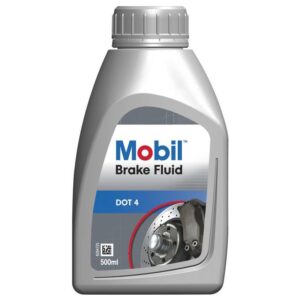If you own a car, you probably know that brake fluid is an essential component of your vehicle’s braking system. Brake fluid is a hydraulic fluid that transfers the pressure from the brake pedal to the brake pads, allowing you to stop or slow down your car. But do you know what brake fluid is made of, and what happens if it gets on your skin? In this blog post, we will inform you about the effects of brake fluid on skin and how to prevent or treat them.
Brake Fluid on Skin Side Effects
Brake fluid can have different types and formulations, depending on the manufacturer and the specifications of the vehicle. The most common types of brake fluid are DOT 3, DOT 4, and DOT 5, which differ in their boiling points, viscosity, and compatibility.
DOT 3 and DOT 4 are glycol-based fluids, which means they contain ethylene glycol, diethylene glycol, or polyethylene glycol. DOT 5 is a silicone-based fluid, which means it contains silicone oil and additives.
Regardless of the type, brake fluid can cause serious damage to your skin if you come in contact with it. Some of the symptoms of brake fluid exposure on skin are:
– Burning sensation
– Itching
– Redness
– Swelling
– Corrosion
– Irritation
– Blisters
These symptoms occur because brake fluid can dehydrate, react, or absorb into your skin, depending on the type and concentration of the fluid. Glycol-based fluids can dehydrate your skin by drawing out the moisture from the cells, causing them to shrivel and die. Silicone-based fluids can react with your skin by forming a sticky layer that can trap dirt and bacteria, leading to infection. Both types of fluids can also absorb into your skin and enter your bloodstream, causing systemic toxicity and organ damage.
Some of the examples of brake fluid on skin conditions are:
Eczema: a chronic inflammatory skin condition that causes dry, itchy, and scaly patches on the skin
Dermatitis: a general term for any inflammation of the skin that can result from contact with irritants or allergens
Blisters: small, fluid-filled sacs that form on the skin due to friction, heat, or chemical exposure
Ulcers: open sores that develop on the skin due to tissue loss or infection
These conditions can vary in severity and duration, depending on the amount and type of brake fluid that got on your skin, and how quickly you treated it. However, some of the potential long-term consequences of brake fluid on skin are:
Scarring: permanent marks or changes in the texture of the skin that result from the healing process of wounds or burns
Infection: invasion and multiplication of microorganisms in the body that can cause disease or complications
Cancer: abnormal growth of cells that can spread to other parts of the body and interfere with normal functions
These consequences can be life-threatening and require medical intervention. Therefore, it is crucial to avoid brake fluid on skin at all costs.
Prevention and Treatment of Brake Fluid on Skin
The best way to prevent brake fluid on skin is to avoid direct contact with the fluid. Here are some safety precautions you can take while using brake fluid in your car:
Wear protective gear, such as gloves, goggles, aprons, etc., to cover your skin and eyes
Work in a well-ventilated area, away from heat sources and sparks
Use a funnel, syringe, or bottle to transfer the fluid from the container to the reservoir
Wipe any spills or leaks immediately with a cloth or paper towel
Dispose of the used fluid and the contaminated materials properly, according to the local regulations
However, if brake fluid gets on your skin, you should act quickly and follow these steps:
Wash the affected area with plenty of soap and water for at least 15 minutes, or until the fluid is completely removed
Apply a moisturizer or a barrier cream to restore the hydration and protection of your skin
Seek medical attention if you experience any severe or persistent symptoms, such as pain, swelling, infection, or allergic reaction
In addition, you can also try some of these products or remedies that can help soothe or heal your skin:
Aloe vera: a natural plant extract that has anti-inflammatory, antibacterial, and moisturizing properties
Coconut oil: a natural oil that has antimicrobial, antioxidant, and emollient properties
Baking soda: a common household ingredient that has alkaline, antiseptic, and exfoliating properties
Honey: a natural sweetener that has antibacterial, anti-inflammatory, and wound-healing properties
These products or remedies can be applied directly to the skin or mixed with water to make a paste or a solution. However, you should always test them on a small area of your skin first, to make sure you are not allergic or sensitive to them.
See also: Methylated Spirits for Stretch Marks
Does Brake Fluid Cure Ringworms
No, brake fluid does not cure ringworms. In fact, brake fluid can be harmful to your skin and cause irritation, corrosion, or infection. Brake fluid is not a remedy for ringworm, and it is not recommended to use it for this purpose.
Ringworm is a fungal infection that causes a red, scaly, itchy rash on the skin. It can be treated with over-the-counter antifungal medications, such as creams, lotions, or shampoos. You can also try some natural remedies, such as apple cider vinegar, tea tree oil, or coconut oil1. However, you should always consult your doctor before using any home remedies, especially if you have severe or persistent symptoms.
To prevent ringworm, you should keep your skin clean and dry, avoid sharing personal items, and wash your bedding and clothes regularly. If you have ringworm on your scalp, you should use an antifungal shampoo and avoid scratching or combing your hair too much.
Conclusion
Brake fluid is a vital component of your car’s braking system, but it can also be a dangerous substance for your skin. Brake fluid on skin can cause various skin conditions, ranging from mild irritation to severe infection or cancer.
Therefore, you should always handle brake fluid with care and avoid brake fluid on skin. If you do get brake fluid on your skin, you should wash it off immediately and seek medical help if needed. You can also use some natural products or remedies to help your skin recover faster.

